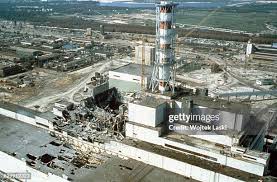The Lasting Legacy of the Chernobyl Disaster

Introduction
The Chernobyl disaster, which occurred on April 26, 1986, remains one of the most catastrophic nuclear accidents in history. Its significance extends beyond the immediate effects on human health and the environment, influencing international nuclear policy, emergency response protocols, and the global discourse on nuclear energy. Understanding the implications of this event is crucial as nations continue to assess and address their energy needs while prioritising safety.
Details of the Disaster
The explosion at Reactor No. 4 of the Chernobyl Nuclear Power Plant in Ukraine released large quantities of radioactive particles into the atmosphere, which spread over much of Europe. Immediate consequences included the death of two plant workers on the night of the explosion and 29 emergency responders who succumbed to acute radiation syndrome in the following weeks. The Soviet government initially attempted to conceal the severity of the incident; however, it was soon evident that the fallout affected thousands of people.
In the years following the disaster, the Soviet Union and later Ukraine undertook massive containment and cleanup efforts. The most notable of these was the construction of a sarcophagus to encase the reactor and prevent further radiation leaks. The area surrounding the plant, known as the Chernobyl Exclusion Zone, remains largely uninhabited, showcasing eerie remnants of the pre-disaster lifestyle amid an encroaching nature reclaiming the land.
Health and Environmental Effects
The health effects of the Chernobyl disaster have been extensive and complex. According to a report by the United Nations, thousands of cases of thyroid cancer, especially among children and adolescents exposed to radioactive iodine, were recorded in the years following the accident. Mental health issues, including post-traumatic stress disorder, also increased significantly among those affected by the disaster.
Environmental impacts are similarly dire; wildlife within the exclusion zone has shown mutations and alterations in behaviour due to radiation exposure. However, a curious phenomenon has emerged: some species have thrived in the absence of human activity, prompting studies on ecological resilience in contaminated areas.
Conclusions and Significance
As we reflect on the Chernobyl disaster, it is a grim reminder of the potential hazards associated with nuclear energy. The event catalysed a global reevaluation of nuclear safety standards and emergency preparedness, leading to stricter regulatory frameworks internationally. Countries have since invested in improved technology and renewable energy sources, driven by the lessons learned from this disaster.
As the world grapples with energy challenges and the impacts of climate change, the legacy of Chernobyl serves as a cautionary tale. Moving forward, policy decisions must be shaped by a deep understanding of the risks involved in nuclear energy production and the responsibility of ensuring the safety of current and future generations.









